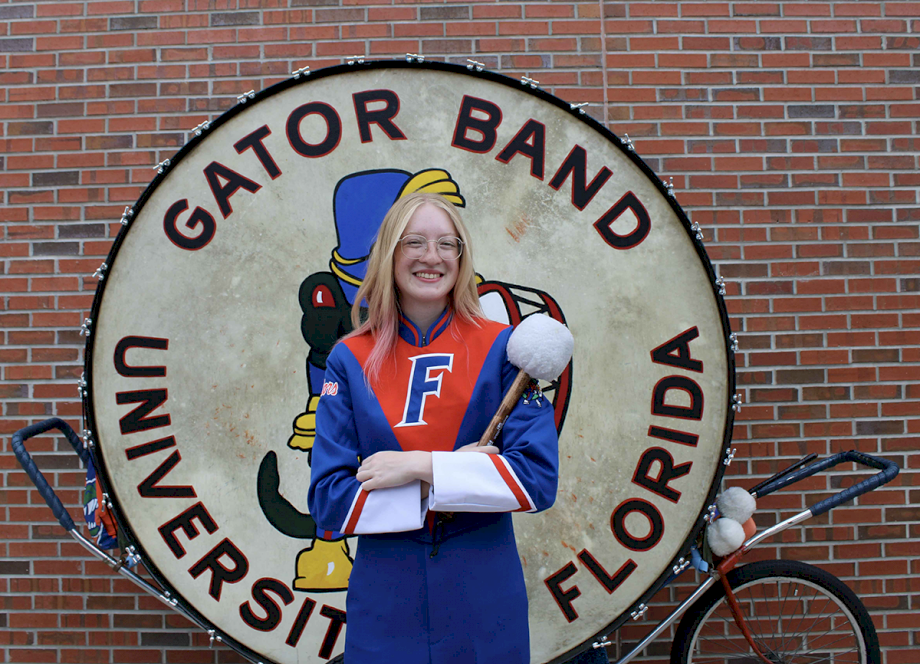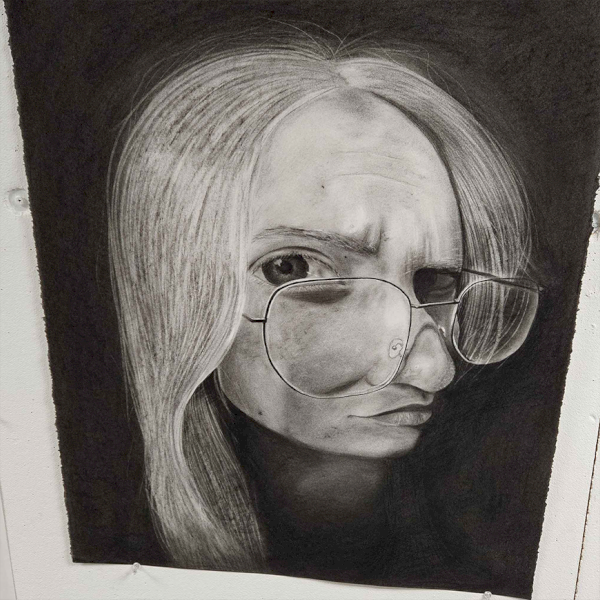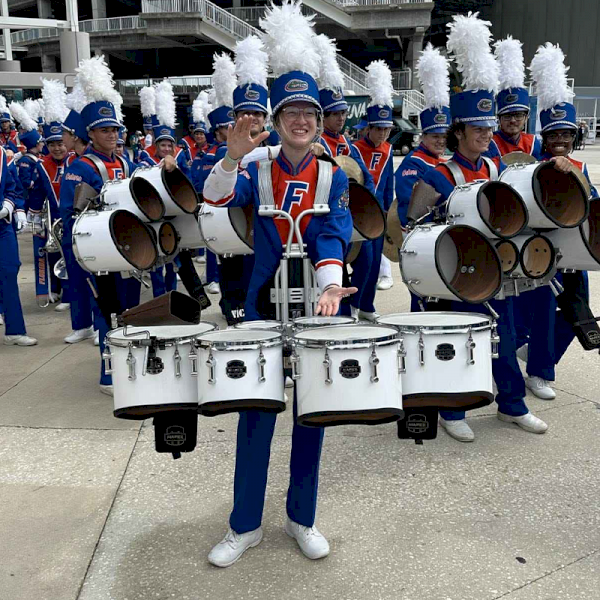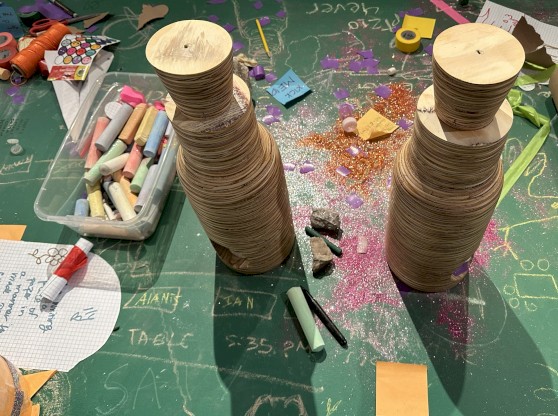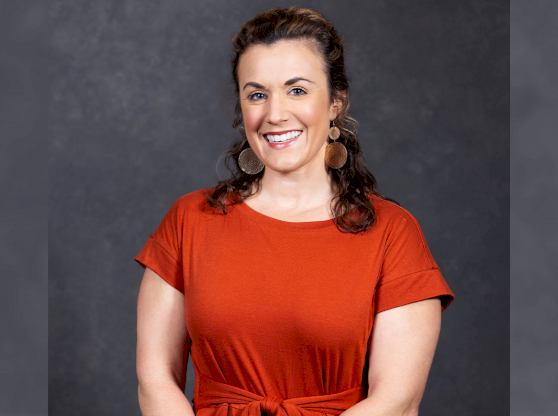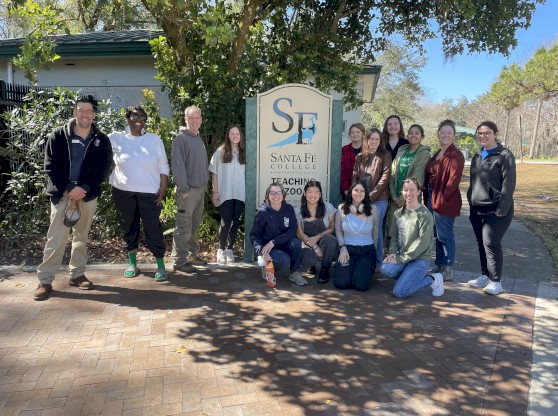Madelynn (Maddie) Johnston, who uses they/them pronouns, is a first-year Pathway to Campus Enrollment (PaCE) student majoring in art history in the University of Florida School of Art and Art History (SAAH). When they aren't honing their skills and scholarship in the visual arts at SAAH, Johnston can be found on the Fightin' Gator Marching Band drumline, where they are a tenor (quads) percussionist.
Johnston sat down with College of the Arts In the Loop news to discuss what it's like balancing online and in-person classes as a PaCE student at COTA, and keeping the beat on game days at the Swamp while toting some of the biggest drums on the field.
Can you give a little background about yourself and what drew you to the art history program? You’ve also noted that you’re a PaCE student, which is a little different in the College of the Arts because our studio classes are held in person. Can you share a little about what that's like?
Johnston: What drew me to the program is my desire to work with art restoration, either in a studio or with a museum. The arts—both music and visual—have always been my strong suits in school, but at first, I was worried that pursuing them in higher education would completely kill the love I have for them. I enjoy the freedom and relaxed nature of doing music and art as hobbies or recreational activities; moreover, I enjoy not feeling the constant need for perfection but, instead, the constant drive for improvement and development.
Before my first semester at college, I hadn’t taken any formal art classes, and my experiences with music were scholastic ensembles of concert band, orchestra, jazz and indoor percussion. I chose to pursue art history because I believe it is both a career that I will enjoy doing for my future, and it has opportunities in many places, so it could be a stable career path.
My current experiences, while I am a PaCE online student, have been very enjoyable because of the studio art class I took. I’m also in the Gator Marching Band and the UF Symphonic Band. Both have been valuable in getting me accustomed to campus and meeting new people that I can call my close friends.
How did you become a tenor on the Florida Drum Line (FDL) of the Gator Marching Band? Have you always been a drummer?
Johnston: I first joined the percussion world in my sophomore year of high school when I started playing bass drum, and it brought me so much happiness and fulfillment that my previous experiences playing in orchestra could not compare to. I don’t mean that in a bad way! But, for reference, I had journeyed through playing each of the orchestra instruments in the string family since kindergarten.
Even though music had been in my life for as long as I can remember, percussion brought new skills, techniques and a new environment of music learning that I really enjoyed. I attribute that to the staff at my high school, who introduced me to the indoor and outdoor marching percussion realms, as well as new ways of striving for mastery.
My sophomore year of high school was when I got the affinity for playing unnecessarily large drums because of how unique the bass drum was, compared to anything I had played before. I auditioned for and played quads in my junior and senior years before trying out for the Gator Band when I came to UF.
Those drums are big! They must require a ton of endurance. Do your experiences as a tenor percussionist affect the way you approach your studies in art history?
Johnston: My experiences with music, in general, have undoubtedly affected the way I go about my daily life. Due to the intense physical demand that carrying quads has, my high school percussion tech always told us that it’s 90% mental. The drums are heavy and it’s always hot in Florida, so, not only making it to your sets on the field but also having the ability to focus on playing the music with clarity and expression is extremely difficult. In addition to keeping good posture and marching form, the music must be performed with emotional intensity and rhythmic accuracy.
Although art history is much less physically intense, the marching arts—and quads, particularly—have given me an attitude of perseverance so that I am always giving my optimum effort. I know that art history, and especially the field of art restoration, will present me with problems that I need to solve efficiently—so I think it is important that I am persistent in presenting solutions that give clients the best work I can possibly produce.
Lots of people always rave about the benefits of the arts for the mind and soul. I can confirm that my experiences with music have greatly shaped my life in a creative and artistic direction. I know it is one hundred percent the path I want to take.
Is there anyone who you would like to give a shoutout to for positively impacting your experience at UF?
Johnston: One person I would shout out is my Drawing Studio professor, Bethany Taylor, MFA. As one of my only in-person contacts to the UF campus due to my PaCE restrictions, she made the studio one of the most enjoyable experiences I had this semester. She is always willing to let students pursue creativity while still learning something from the experience.
Professor Taylor is a friendly and funny person, and, added to the small class size, her personality made the studio a more intimate experience that I enjoyed, and where I learned a lot. She always has the right thing to say when critiquing art in how to make it more accurate to what I was attempting to portray. This was my first formal art class, and I firmly believe I grew as an artist because she was such an extraordinary teacher.
Another group of people that I could shout out is all the other women in FDL. Three out of the four section leaders are women! And while I think it is valuable to recognize women in percussion, my respect extends to all who indulge in "smacking the drum (or board) with sticks."
My mom likes to tell me carrying my drum around is a remarkable feat—and I’ll admit, I didn’t think I could do it myself for a while! But no matter how heavy the instrument is, there is a level of skill and dedication that everyone must have, regardless of their size and strength, their gender, or how they present themselves. I present very feminine most of the time, but I feel that the label of “female” puts a lot of unwanted ideas on me about how I should dress, act and talk, and about what things I should be doing. So, I have chosen to do little things that make me feel comfortable—like identifying as nonbinary, using they/them pronouns, and presenting my outward appearance in ways that capture my being and personality.
The other women and gender nonconforming members of FDL have encouraged this and have become some of my closest friends. I have made so many meaningful connections in the traditionally male-dominated space of drumline that have taught me about holding my own and being able to speak up freely about anything. They make me feel safe in a community that can rally around drumline but still talk about anything and uplift each other in a world where we aren’t always accepted and treated the same.
